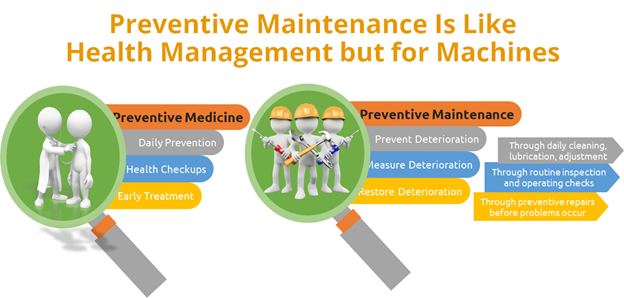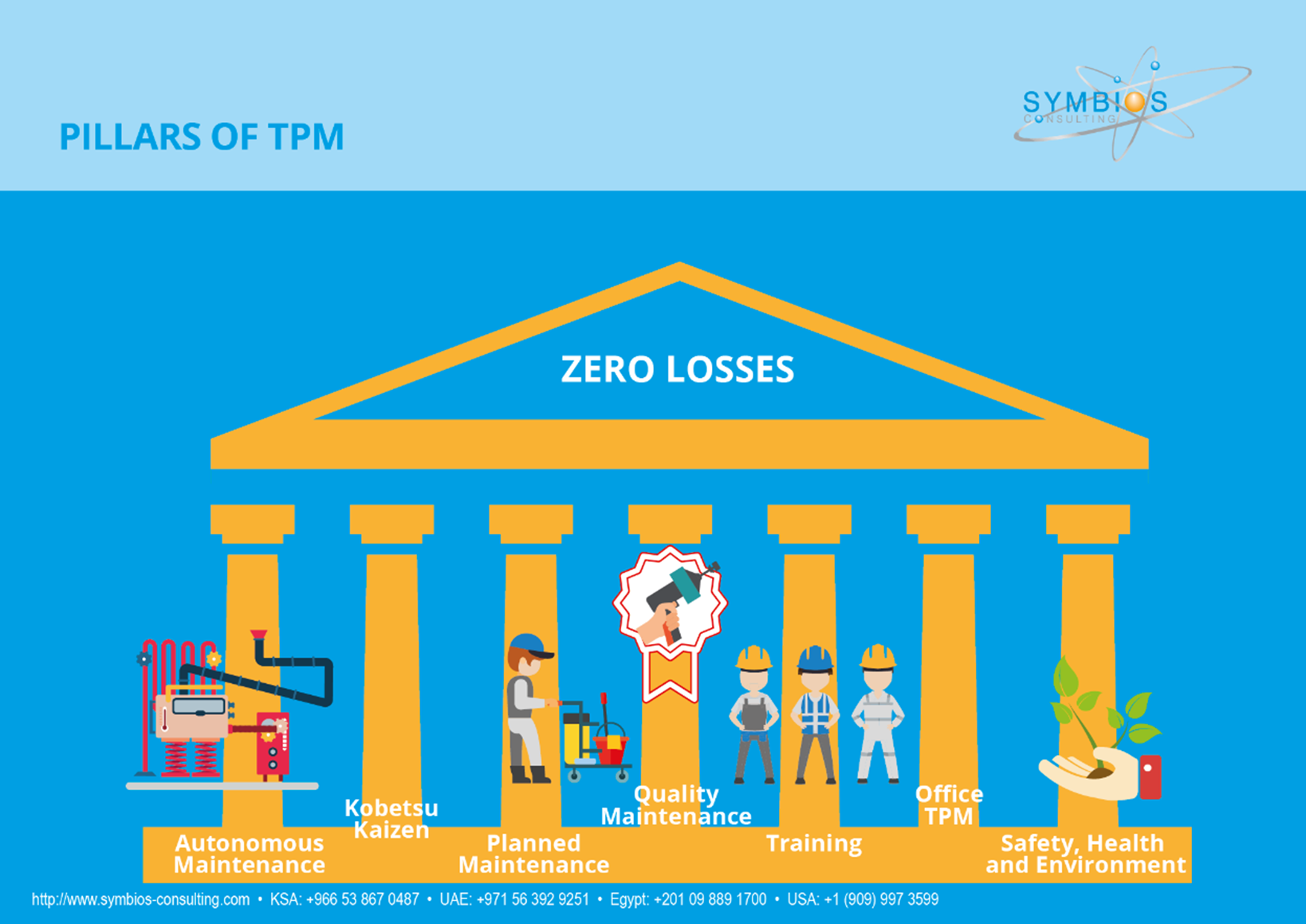Total productive maintenance (TPM) is a system of maintaining and improving the integrity of production, safety, and quality systems through the machines, equipment, processes, and employees that add business value to an organization.
TPM focuses on keeping all equipment in top working condition to avoid breakdowns and delays in manufacturing processes.
TPM Pillars
The eight pillars of TPM are mostly focused on proactive and preventive techniques for improving equipment reliability:
- Autonomous Maintenance
- Focused Improvement
- Planned Maintenance
- Quality management
- Early/equipment management
- Education and Training
- Administrative & office TPM
- Safety Health Environmental conditions
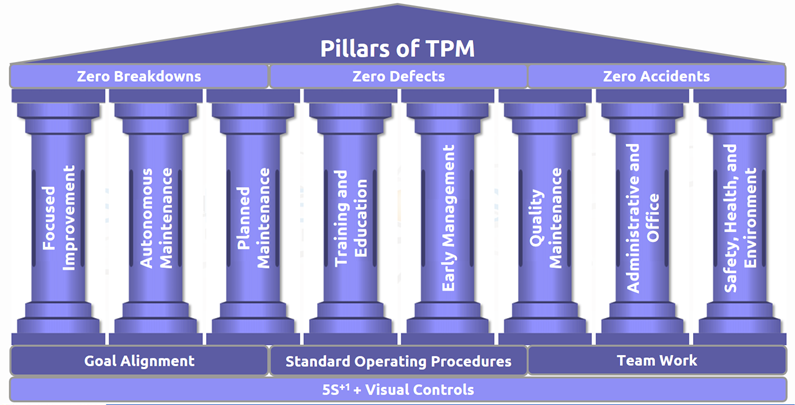
With the help of these pillars, we can increase productivity. Manufacturing support.
3 main aspects of the foundation:
- Goal Alignment
- Standard Operating Procedures
- Team Work
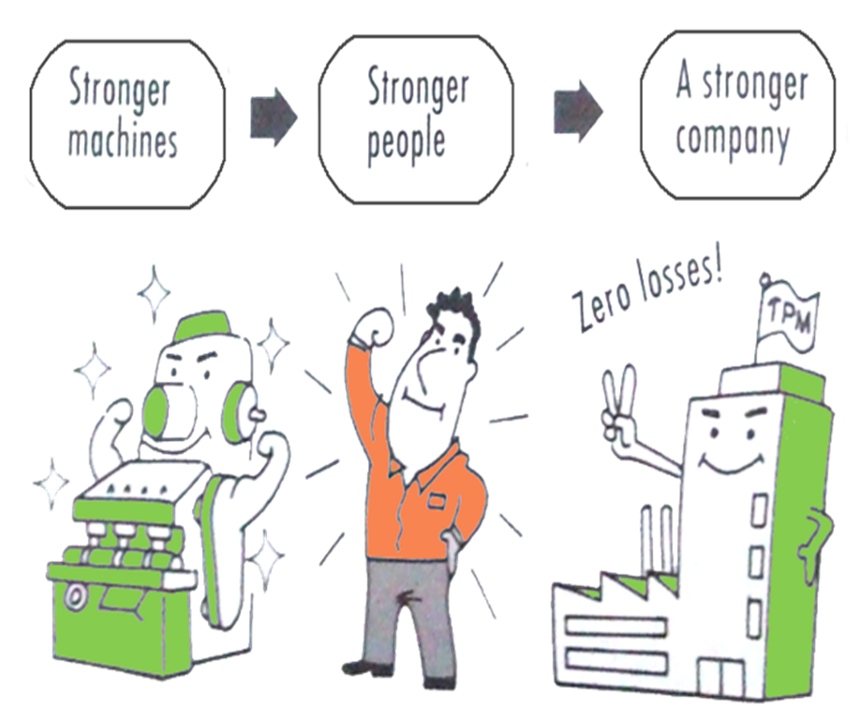
3 main Goals:
- Zero Breakdowns
- Zero Defects
- Zero Accidents
By utilizing TPM processes, you will reach the following S.M.A.R.T goals:
- Save money by equipment and products meeting company standards.
- Manage a clean and organized workplace.
- Avoid product, material, and time waste in a rapidly changing economic environment.
- Reduce accidents and repairs.
- Teamwork and confidence among your employees through TPM processes.
Through the total participation of your workplace, TPM focuses on cultivating the overall success of your facility. Strive to get your entire company on board and start recognizing problems, finding solutions, and preventing breakdowns of equipment or machinery.
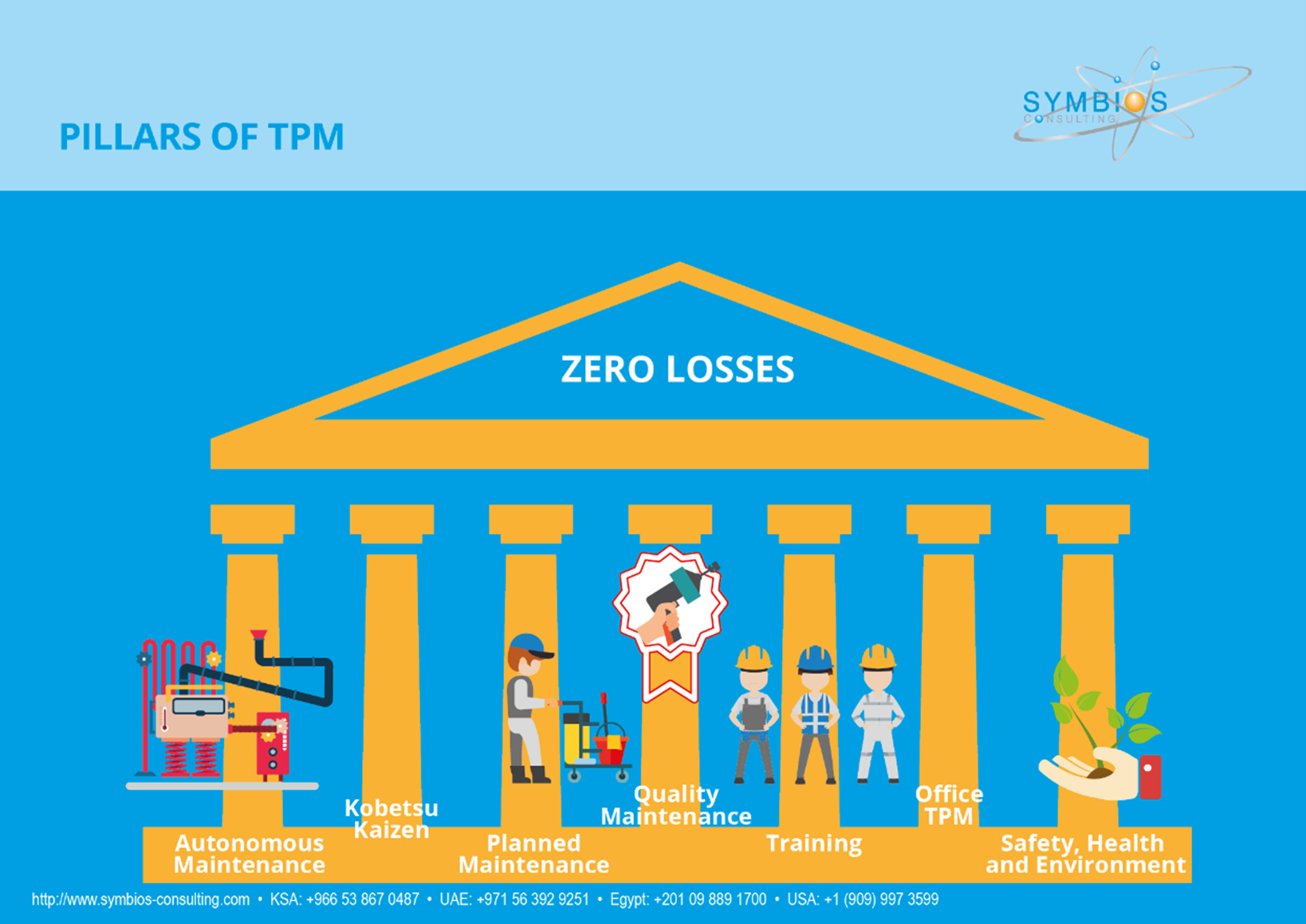
In order to implement a successful TPM process, your workplace needs to be organized and clean. If you thought this would include utilizing some 5S workplace, you’re correct. A successful 5S process is an important pre-requisite to have under your belt prior to diving into TPM.
Oftentimes machine or equipment maintenance is considered the less desirable and difficult lean manufacturing tool; however, it is worth the time and investment in the long run.
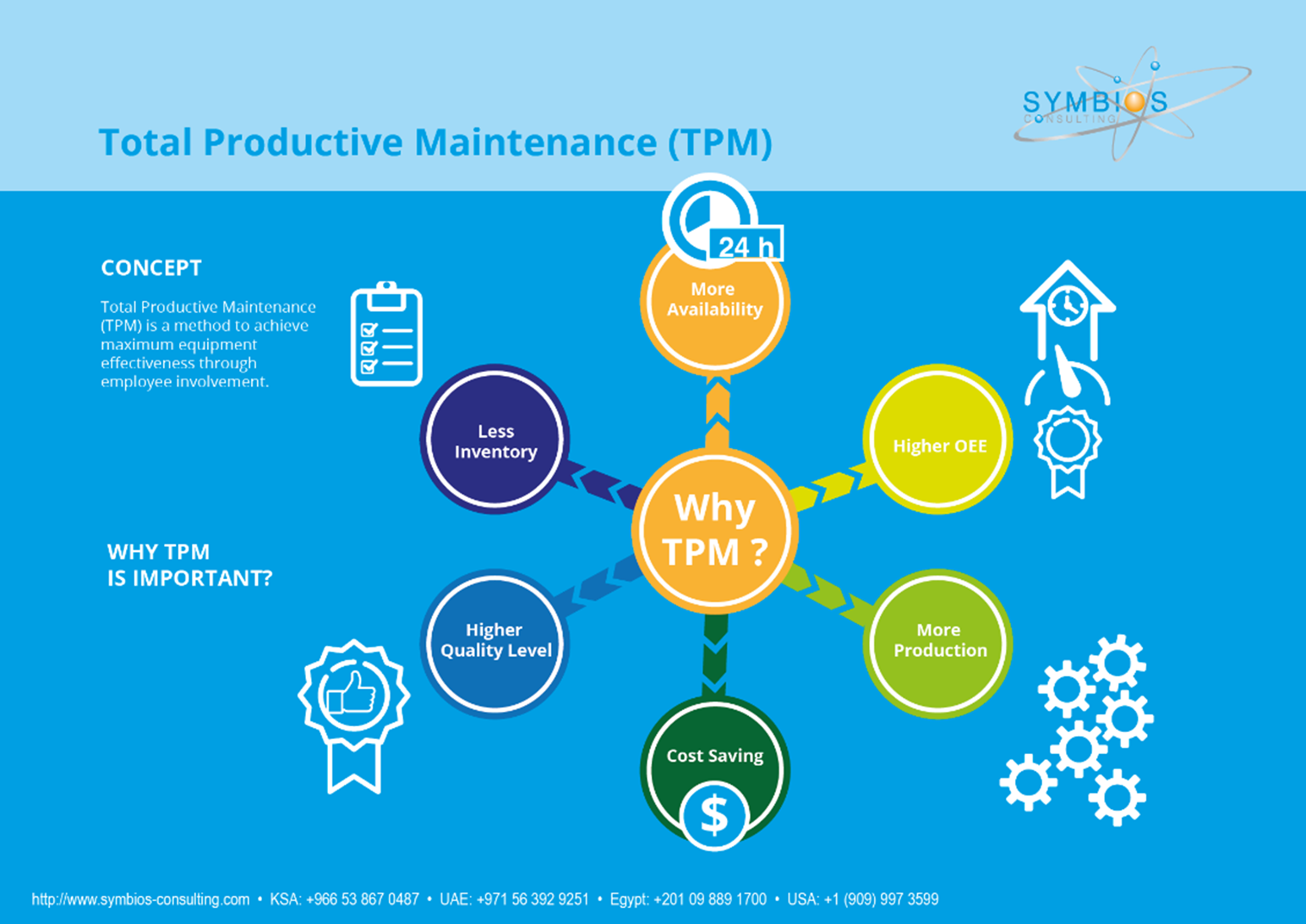
Objective
The main objective of TPM is to increase the Overall Equipment Effectiveness (OEE) of plant equipment. TPM addresses the causes for accelerated deterioration while creating the correct environment between operators and equipment to create ownership.
OEE has three factors which are multiplied to give one measure called OEE
Performance x Availability x Quality = OEE
Each factor has two associated losses making 6 in total, these 6 losses are as follows:
Performance- How well is the production process performing? Has the speed or efficiency of the equipment changed?
Performance = (1) running at reduced speed – (2) Minor Stops
Availability- What is the percentage of time that a piece of equipment or a particular process is available for production, without downtime from breakdowns?
Availability = (3) Breakdowns – (4) Product changeover
Quality- How many products were of good quality? Has the defect-rate of produce goods increased or decreased?
Quality = (5) Startup rejects – (6) Running rejects
The objective finally is to identify then prioritize and eliminate the causes of the losses. This is done by self-managing teams that solve problems. Employing consultants to create this culture is common practice.
With TPM implemented in your workplace, running equipment and machines until they break down is part of the past.

Preventative maintenance allows your organization to focus more on production time, instead of wasting time on emergency and unscheduled repairs.
In order to improve the overall equipment effectiveness (OEE) and eliminate product waste, create small multidisciplinary teams to measure processes. OEE is part of the
improvement step of process worth management and takes into account all losses – from availability, performance, and quality.
Tracking and collecting the OEE data is an integral component of the TPM process, as each collection aims to stop all defects, breakdowns, and stops.
